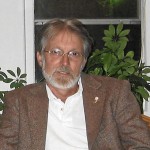Home › Forums › Science & History › Where in the Universes Are We?
Tagged: cosmology, revelation, science
-
AuthorPosts
-

Chris WoodParticipantHello all,
I recommend the video presentations found at ubastronomy.com where John Causland has uploaded some of the presentations he has given at conferences throughout the years. He did his Where In the Universes Are We presentation in Kansas City 2013, Texas in March of 2014, and in Madison in June 2014. In my browser it is easier to watch the 15 minutes cut up videos on youtube than the 90 minutes presentation.
Check it out!

Mark KurtzParticipantWell, uh, where Chris?

Chris WoodParticipant
KathleenKeymasterHi Chris,
We also have this set of videos available on our site. See http://urantia-association.org/publications/videos/where-in-the-universes-are-we/.
Kathleen
From Sydney, Australia

denver606ParticipantThe problem John has with trying to make the UB and science mesh is that they can’t. And the reason for this is that the authors of the UB have a wider use for the term nebula and even interchange it with the term universe when talking about the spirals matter in outer space. They don’t use the term galaxy. The term galaxy in the UB is a composite of universe like Orvonton. A galaxy is a composite of universes. A universe has one center only like M31, Andromeda, and all the other so-called “galaxies” in outer space. A galaxy in UB terms is a cluster of univeses like M31, or the Virgo cluster. All those clusters of “galaxies”, also called a galaxy of universes by the authors, in the same space level is called a universe of galaxies or first outer space level, etc. If you try to use the scientific definitions for the UB, you will be lost. This is simple when you get it but for so many years UB readers have tried to mesh the two leading to confusion.

emannyBlockedTUB is constantly trying to correct our science. It tells us that space is not absolute, that the universe is not a boundless cube. Well, our cartesian graph is an absolute space , a boundless cubic. We have been calculating on this absolute background for some time now. Einstein’s space-time is an absolute space and a linear time. TUB flatly states that space is not absolute and that time is circular simultaneity. Finite creation is a projection from higher spirit realities. The unbounded cubic can only project onto a bounded cubic and this is necessary because the finite is bounded and shadowy. Perhaps we should listen carefully to these clues that we have gone wrong. The UB is trying to correct our science so that we can correlate the two.

Nigel NunnParticipantRegarding science and the Urantia Book, in paper 101 section 4, “The Limitations of Revelation“, the first point in the author’s list is:
1. The reduction of confusion by the authoritative elimination of error.
As someone who “takes delight in cultivating” (192.5, 16:6.9) the third cosmic intuition — the “mathematical form of the cosmic discrimination” (192.2, 16:6.6) — I’m not so much interested in the way the authors coordinated a 1930’s “frame in which to think” (see 1260.2, 115:1.1). But I’m intrigued by what errors they may be authoritatively eliminating.
For example, native physics currently has two “standard models”: a standard model of (1) cosmology, and a standard model of (2) particle physics. The foundation of the standard cosmological model is that unadjusted redshift — from both local and non-local sources — is a precise indicator of distance. This led naturally to ideas about a Big Bang, and is now the central pillar holding up (both in the sense of supporting and retarding) native cosmology. In paper 12:4.14 (134.3), the author explains that, given our electromagnetic toolkit, this idea about cosmological redshift would be a very natural assumption for us to make, but that it’s utterly erroneous.
Is this one example of “authoritative elimination of error“?
Regarding the current standard model of particle physics, its foundation involves assumptions about how something called “energy” can spontaneously configure itself into leptons and quarks… which just as spontaneously can turn back into “energy”. However, in papers 15, 29, 41, 42 and 46, the various authors describe how such particles are actually built up, by brilliant design, from clusters of huddling ultimatons. That is to say, the authors imply our current best approach (quantum field theories) is also erroneous.
Is this another example of “authoritative elimination of error“?
For me, as a scientist, the question is: if these really are instances of “authoritative elimination of error“, then I have to wonder… has the UB given us a helping hand to get past two otherwise **insurmountable** roadblocks?
For those who might be asking the good question: “if the UB ultimatonic model is valid, why were the revelators not restricted from revealing such an extraordinary fact?”, here’s another good question: if the ultimaton is not discoverable by human technique, do those “limitations of revelation” apply?
The (unreleased) part 4 of a video series found here addresses all this. And more

PS: Regarding “errors on the face of the associated cosmologies” (1109.2, 101:4.1), think about this: had the revelators given us a picture to satisfy 1940’s physics, this would have been outgrown by the 1970’s. Likewise, had they given us a picture to satisfy 1970’s physics, this would have been outgrown by 2015… So maybe their approach was best: coordinate the ideas of the day, while authoritatively eliminating certain very significant errors. My point is that our assumptions about redshift and quantum field theories have evolved into deeply significant errors. But think of the fun we students of these papers will have, when more of us get qualified to discuss such things.
Nigel

AnonymousInactivewhat’s the direct course?
11:1.3 (118.5) We all know the direct course to pursue to find the Universal Father. You are not able to comprehend much about the divine residence because of its remoteness from you and the immensity of the intervening space, but those who are able to comprehend the meaning of these enormous distances know God’s location and residence just as certainly and literally as you know the location of New York, London, Rome, or Singapore, cities definitely and geographically located on Urantia. If you were an intelligent navigator, equipped with ship, maps, and compass, you could readily find these cities. Likewise, if you had the time and means of passage, were spiritually qualified, and had the necessary guidance, you could be piloted through universe upon universe and from circuit to circuit, ever journeying inward through the starry realms, until at last you would stand before the central shining of the spiritual glory of the Universal Father. Provided with all the necessities for the journey, it is just as possible to find the personal presence of God at the center of all things as to find distant cities on your own planet. That you have not visited these places in no way disproves their reality or actual existence. That so few of the universe creatures have found God on Paradise in no way disproves either the reality of his existence or the actuality of his spiritual person at the center of all things.
Hello all, I recommend the video presentations found at ubastronomy.com where John Causland has uploaded some of the presentations he has given at conferences throughout the years. He did his Where In the Universes Are We presentation in Kansas City 2013, Texas in March of 2014, and in Madison in June 2014. In my browser it is easier to watch the 15 minutes cut up videos on youtube than the 90 minutes presentation. Check it out!
-
AuthorPosts
Login to reply to this topic.
Not registered? Sign up here.
